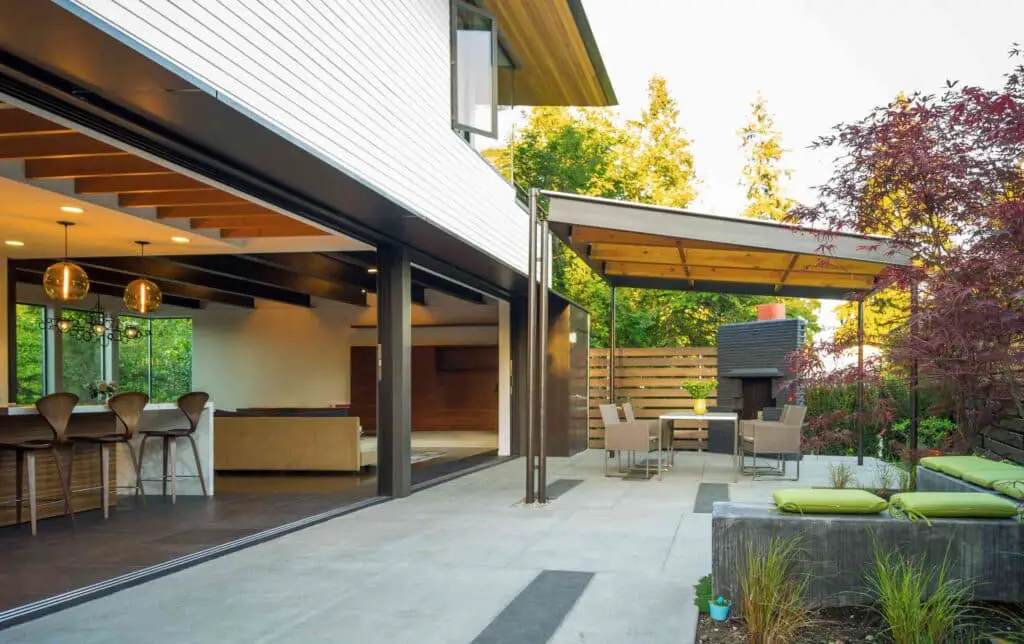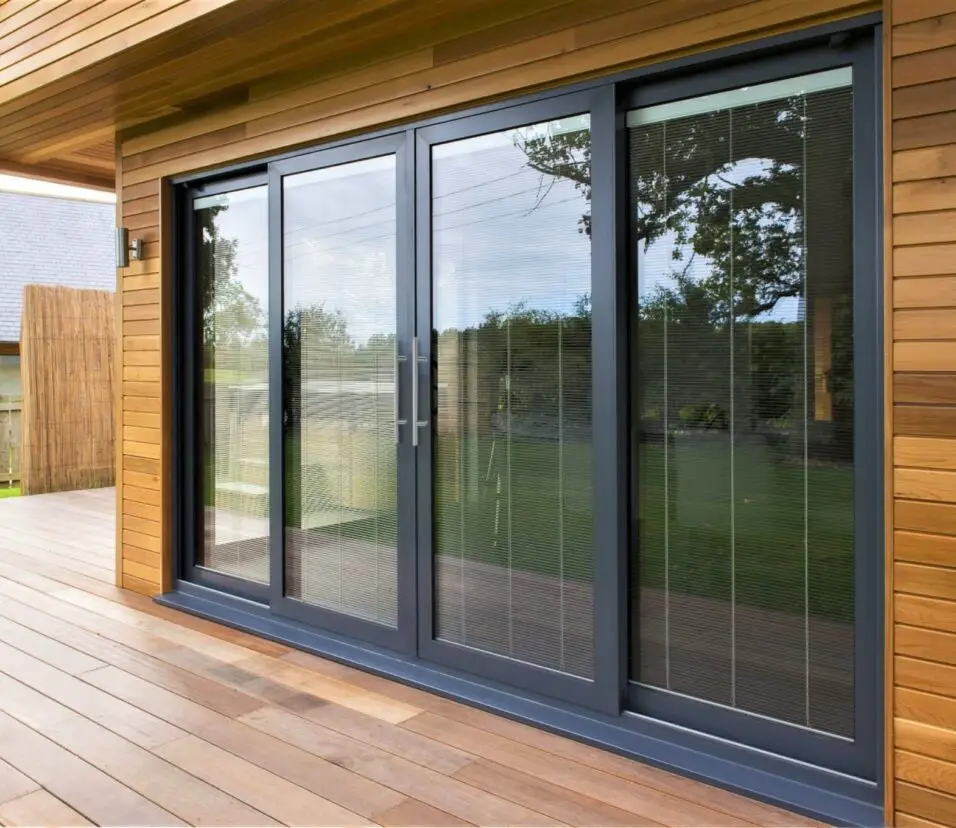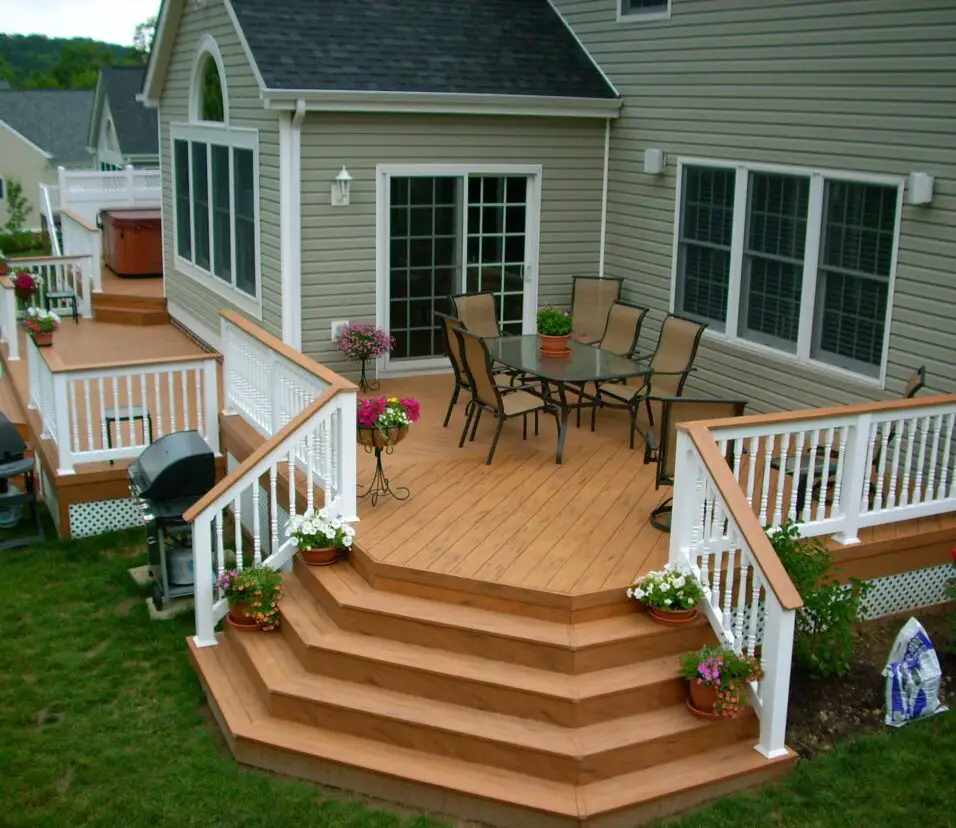Is A Patio Considered A Structure
Introduction
Is A Patio Considered A Structure: A patio is a popular outdoor space that is often used for relaxation, dining, and entertaining. It is typically located adjacent to a house or building and is paved with materials such as concrete, stone, or brick. While patios are commonly found in residential settings, they can also be found in commercial establishments such as restaurants, hotels, and cafes.
When it comes to determining whether a patio slabs is considered a structure, there are a few factors to consider. Firstly, a patio is typically an extension of a building and is often attached to it. This means that it shares a foundation or structure with the main building, making it an integral part of the overall structure.
Additionally, a patio is usually built with durable materials that are designed to withstand the elements and provide a stable and functional outdoor space. This can include features such as a solid foundation, sturdy walls or railings, and a roof or overhead covering. These elements further support the argument that a patio can be considered a structure.
However, it is important to note that not all patios are considered structures. In some cases, a patio may be a simple paved area without any additional features or attachments to the main building. These types of patios are often referred to as “”floating”” or “”freestanding”” patios and are not considered structures in the same way as attached patios.

Do you need a permit to build a covered patio in California?
Permit requirements vary by city or county and patio size and design. To comply with municipal building requirements, most construction projects require a permit.
A covered patio must be built safely and legally with building permits. They protect homeowners and neighbors by assuring structural integrity and fire safety. Permits additionally ensure that the patio is created without harming the environment or neighborhood.
California covered patio permits require precise plans and standards. The materials, patio dimensions, and any extras like lights and electricity outlets may be included. Proof of insurance and a permit fee may be required.
Building without a permit can lead to fines, penalties, and legal troubles if the work violates building codes. If you ever sell your home, a lack of permits for any changes or additions could complicate the process and lower its value.
Is a patio attached to the house?
Yes, a patio can be attached to a house. A patio is an outdoor space that is typically paved and used for dining, entertaining, or relaxation. It is often located adjacent to a house and can be accessed through a door or a sliding glass door. Having a patio attached to the house offers several advantages and can enhance the overall functionality and aesthetics of the outdoor space.
Having a patio attached to the house is convenient. A patio outside the door makes outside area use easier. A patio linked to the house makes it easy to have coffee in the morning, grill with friends, or rest outdoors.
Having a patio adjacent to the house makes indoor-outdoor living seamless. A patio links the indoors and outside by extending the living space to the outdoors. This makes the house feel larger and more open and integrates indoor and outdoor activities.
A patio linked to the home offers ease, seamless transition, and weather protection. A patio can be covered or partially covered, offering shade and shelter from the sun, rain, and wind, depending on the design and layout. This allows outdoor use year-round, regardless of weather.
A patio attached to the house can also improve the house and outside area’s appearance. It can match the house’s architecture and be adorned with furniture, plants, and other items to make it inviting. An connected patio, whether it’s a small corner or a large entertainment space, may add value and elegance to the home.
Do you need a permit for a patio cover in San Diego?
Patio cover construction in San Diego requires a permit. This ensures the patio cover is safe and meets all building laws and standards.
There are several stages to get a patio cover permit in San Diego. You must first apply to the city’s Development Services Department. You must describe the patio cover’s size, materials, and design in your application.
The city’s building inspectors will assess your application. They will determine if the patio cover fits all criteria and local building codes. This evaluation procedure may take time, so request for the permit well before starting work.
It’s important to note that San Diego patio cover permit requirements vary by size and design. A house-attached patio cover with a roof may be subject to more rules than a standalone one.
Building a patio cover in San Diego may require a permit and other laws. This may include getting homeowners’ association clearance, making sure the patio cover fits setback restrictions, and getting electrical or plumbing permits if you want lights or other amenities.
How close to the property line can I build a patio?
How close to the property line you can create a patio is crucial. Building too close to the property boundary can produce legal complications and neighbor disputes. Where you can install a patio near the property line depends on local zoning requirements.
Many places have setback regulations for structures from the property line. Safety, privacy, and access between buildings are usually ensured by setback restrictions. The type of structure and property zoning can affect these criteria.
Patio setbacks may be 5 feet from the property line in some regions. The patio edge must be at least 5 feet from the property boundary. Setbacks may be 10 feet or more in other regions.
It’s vital to remember that patio setbacks are just one factor. Local building laws and homeowner association rules may also limit patio construction near the property border. Always visit your local building department or a competent contractor to guarantee you’re following all requirements.
What is a patio structure called?
A patio structure is commonly referred to as a pergola. A pergola is an outdoor structure that provides shade and support for climbing plants. It typically consists of vertical posts or pillars that support a series of horizontal beams or rafters. These beams are often left open, allowing sunlight to filter through while still providing some shade. Pergolas are a popular addition to outdoor spaces such as gardens, patios, and decks, as they create a visually appealing and functional area for relaxation and entertainment.
“Pergola” derives from Latin “pergula,” meaning a projecting roof or arbor. Simple or elaborate pergolas. Pelmets with lattice panels, curtains, or retractable canopies provide shade and privacy.
A pergola creates a separate outdoor living space. By blending indoors and outside, individuals may enjoy both. An outdoor pergola can serve as a dining or seating area.
A pergola adds elegance and cover to a patio or garden. Open space and air movement make the space feel larger and more inviting. Vining plants and roses can grow on pergola beams and rafters, adding beauty and foliage.
A pergola is a patio structure. A pergola, whether simple or elaborate, provides shade, architectural interest, and outdoor living space. Any patio or garden benefits from its beauty and functionality.
Outdoor structures are permanent or semi-permanent features with a purpose. Man-made structures provide outside shelter, support, and order. Garden sheds, gazebos, multi-level decks, and pergolas are examples of structures.
Outdoor constructions can be wood, metal, or concrete and look different depending on their use. They can stand alone or be attached to buildings, open or enclosed. Structures should be permanent or semi-permanent to enhance outdoor environments.
Outdoor structures are built to last, provide shelter, or support.
Can a patio be classified as a structure?
Yes, a patio can be classified as a structure in the context of outdoor spaces. A patio is typically an outdoor area that is paved or surfaced with materials such as concrete, stone, or brick. It is often used as an extension of a house or building, providing a space for outdoor activities, dining, and relaxation. Patios can vary in size and design, ranging from small intimate spaces to large open areas.
When considering whether a patio can be classified as a structure, it is important to look at its characteristics. A patio is typically a permanent or semi-permanent feature that is built or installed with the intention of long-term use. It is usually attached to a house or building and is designed to withstand outdoor elements such as weather and wear. Additionally, a patio often requires some form of construction or installation, involving materials, labor, and potentially permits or approvals.
Are there specific criteria that determine whether a patio is considered a structure?
Structures in outdoor settings are permanent or semi-permanent features developed for a specific purpose. Specific factors can assist determine whether a patio is a structure.
One crucial factor is permanency. A patio made of sturdy materials like concrete or stone is more likely to be considered a building. However, a patio that is temporary and readily destroyed may not be a structure.
The patio’s intended purpose is another factor. A patio that serves as an outside dining or entertaining space is more likely to be considered a building. However, a patio that is only decorative or provides no utility may not be a structure.
How does the classification of a patio as a structure impact legal and regulatory requirements?
A patio is a structure, so it must follow outdoor building construction, usage, and maintenance requirements. These rules protect the terrace and its surroundings.
Classifying a patio as a structure may require local permits before construction can begin. For building laws and zoning compliance, the patio must meet specific standards. Failure to get permits can result in fines or legal action.
Patios may also be subject to building regulations including minimum setback distances from property lines and height limits. These rules avoid overpopulation, protect privacy, and prevent the patio from blocking neighboring properties’ views. Homeowners must know these criteria and make sure their patio meets them to prevent legal concerns.
Are there any limitations or restrictions on the construction or use of a patio if it is considered a structure?
When a patio is classified as a structure, there may be certain limitations and restrictions on its construction and use. These limitations and restrictions are typically put in place to ensure safety, compliance with building codes, and to protect the surrounding environment.
One common limitation is the requirement to obtain permits for the construction of a patio structure. Depending on local regulations, a permit may be necessary to ensure that the patio is built according to code and meets safety standards. Failure to obtain the necessary permits can result in fines or even the removal of the patio.
In addition to permits, there may also be restrictions on the size, height, and location of the patio structure. These restrictions are often in place to prevent the patio from obstructing views, encroaching on neighboring properties, or causing other potential issues. It is important to consult local building codes and regulations to ensure compliance with these restrictions.

Conclusion
After analyzing the information and considering various perspectives, it can be concluded that a patio is indeed considered a structure. A patio is an outdoor area that is typically paved and used for dining or recreational purposes. It is usually attached to a house or building and is designed to provide an extension of the living space. While it may not have walls or a roof like traditional structures, it still meets the criteria of being a defined and purposeful area that is constructed and attached to a larger building.
One of the main reasons why a patio explained is considered a structure is because it requires planning and construction. Building a patio involves various steps such as leveling the ground, laying a foundation, and installing the necessary materials such as concrete, stone, or wood. This process requires careful consideration of the design, materials, and functionality of the patio, similar to how one would approach building a traditional structure. Additionally, a patio often requires permits and inspections from local authorities, further emphasizing its classification as a structure.
Furthermore, a patio serves a specific purpose and provides a designated area for outdoor activities. It is commonly used for dining, entertaining guests, or simply relaxing outdoors. The fact that it is attached to a house or building also adds to its structural nature, as it becomes an integral part of the overall architecture. A patio can enhance the aesthetic appeal and functionality of a property, and its construction and design are often considered in the overall planning and layout of a building.








